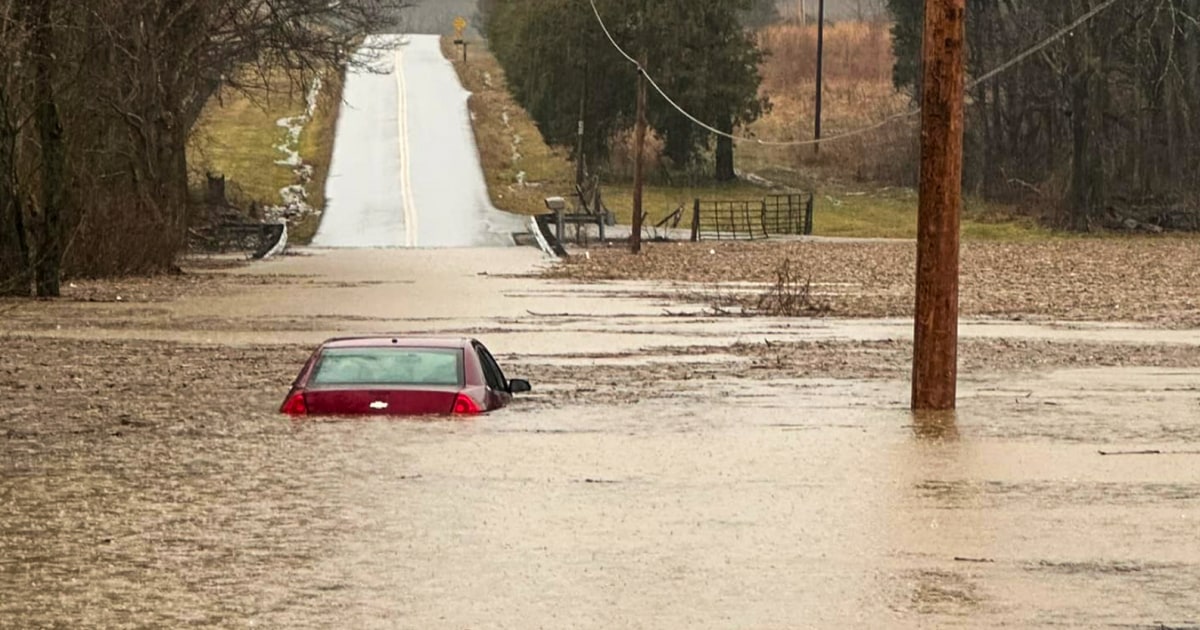Devastating Deluge and Bitter Winter: Understanding the Dual Weather Woes in the U.S.
The United States has long been a nation characterized by its varied climate, ranging from sun-drenched deserts to snow-capped mountains. However, recent events have underscored a disturbing trend: the increasing volatility of weather patterns, leading to devastating deluges and bitter winters. A tragic flooding incident in the Southeastern U.S. has claimed one life, while winter storms wreak havoc across other regions, causing widespread disruption. This dual weather crisis highlights the urgent need for understanding and addressing the challenges posed by changing climate patterns.
The Southeastern Deluge: A Tragic Event
In the wake of heavy rainfall, parts of the Southeastern U.S. have experienced catastrophic flooding. This recent incident serves as a stark reminder of nature’s unpredictable power. Communities are grappling with the aftermath, as roads are submerged, homes are damaged, and residents are displaced. The loss of life, including one unfortunate victim, adds a deeply personal layer to the statistics. Such tragedies not only affect the immediate families but ripple through entire communities, instilling fear and uncertainty.
Flooding is not a new phenomenon in the Southeast, but the intensity and frequency of such events have risen alarmingly over the years. According to the National Oceanic and Atmospheric Administration (NOAA), the Southeastern U.S. has witnessed a marked increase in extreme precipitation events in recent decades. Climate change is a significant factor, with warmer temperatures leading to more moisture in the atmosphere, resulting in heavier downpours.
- Increased rainfall: Studies show that heavy rainfall events have become more common, with projections indicating further increases in the future.
- Urbanization: Rapid urban development in many Southeastern cities has exacerbated flooding, as natural drainage systems are overwhelmed.
- Infrastructure challenges: Aging infrastructure struggles to cope with the new normal of frequent and severe storms.
Bitter Winter: A Nationwide Concern
While the Southeast copes with flooding, other regions face the harsh realities of a bitter winter. Winter storms have swept across the Midwest and Northeast, bringing heavy snowfall, ice storms, and freezing temperatures. These conditions have disrupted daily life, from treacherous travel conditions to power outages affecting thousands.
The impact of winter storms extends beyond inconvenience; they pose significant risks to public safety and economic stability. Schools close, businesses shut down, and emergency services are stretched thin. Moreover, vulnerable populations, such as the elderly and low-income families, face heightened risks during extreme cold events.
- Travel disruptions: Airports and highways have seen significant delays and closures, stranding travelers and complicating logistics.
- Power outages: Ice accumulation on power lines can lead to widespread outages, leaving many without heat and electricity.
- Economic impact: The cost of recovering from winter storms can be substantial, affecting local economies and leading to increased insurance claims.
The Interconnectedness of Weather Patterns
The simultaneous occurrence of devastating deluges and bitter winters raises important questions about the interconnectedness of weather patterns across the U.S. These extreme weather events are not isolated; they are often symptomatic of broader climatic shifts that have far-reaching implications.
For instance, the phenomenon known as the Polar Vortex can lead to unusual winter weather in the U.S. when cold Arctic air pushes southward, resulting in extreme cold in some regions while simultaneously influencing precipitation patterns elsewhere. This complex interplay between different weather systems means that the country must prepare for an increasing number of dual weather crises.
Preparing for the Future: Mitigation and Adaptation Strategies
As the frequency and intensity of weather-related disasters increase, it becomes crucial for communities to develop effective strategies for mitigation and adaptation. Here are some key approaches that can help reduce vulnerability:
- Improved infrastructure: Investing in resilient infrastructure, such as upgraded drainage systems and flood barriers, can help cities better withstand extreme weather.
- Emergency preparedness: Communities must have robust emergency response plans that account for various scenarios, including simultaneous flooding and winter storms.
- Public education: Raising awareness about the risks associated with extreme weather can empower individuals and communities to take proactive measures.
- Sustainable practices: Implementing sustainable land use and development practices can reduce the impact of flooding, while also contributing to climate change mitigation.
The Role of Government and Policy
Addressing the challenges posed by these dual weather woes requires coordinated efforts at all levels of government. Federal and state agencies must prioritize funding for climate resilience projects and disaster response initiatives. Moreover, policies that promote sustainable development and reduce greenhouse gas emissions are essential for combating the root causes of climate change.
Additionally, fostering collaboration between government entities, private organizations, and community groups can enhance preparedness and response efforts. Engaging local residents in planning processes and recovery efforts ensures that solutions are tailored to the specific needs and vulnerabilities of each community.
Conclusion: A Call to Action
The recent incidents of devastating deluge and bitter winter across the U.S. serve as a sobering reminder of the increasing volatility of our climate. While these weather woes can bring destruction and despair, they also present an opportunity for collective action. By investing in resilience, enhancing preparedness, and fostering sustainable practices, we can better equip ourselves for the challenges that lie ahead.
As we navigate this changing landscape, it is imperative to remain optimistic and proactive. Together, we can build a future where communities are not only able to withstand the impact of extreme weather but thrive in the face of adversity. The path forward may be fraught with challenges, but with determination and collaboration, we can turn the tide against the forces of nature.
See more Your Daily Weather



